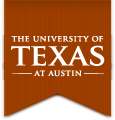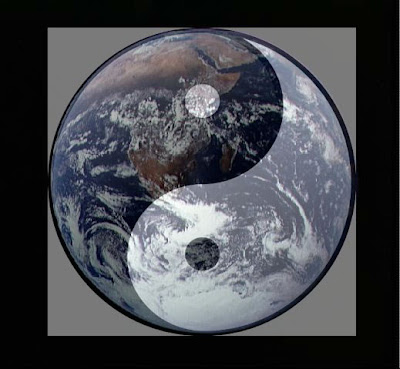A second model for complexity at level 1 - chemical - has been developed by Ilya Prigogine on the thermodynamic of complex susystems far from equilibrium, particolarly on the so-called dissipative systems, to be understood as an thermodynamical open system which works in a state far from thermodynamical equilibrium, exchanging energy, matter and/or entropy with the environment. Dissipative systems are characterized by spontaneous formation of anisotropy, namely of complex and oredered patterns, sometimes chaotic. Sush sustems, when crossed by increasing flows of energy and matter, may also evolve, passing from instability phases and increasing the complexity of the structure (that is the order) and decreasing their entropy (negentropy).
The term dissipative system has been named by Prigogine at the end of the '60s, lwork for which he received the 1977 Nobel prize for chemistry. The contribution of Prigogine was that to bring attention toward the connection between order and energy dissipation, differently from the static and equilibrium situations generally studied until then, and contributing significantly to the birth of what today is called epistemology of complexity.
In recent years there has been developed a vocabulary of complexity with fterms like fluctuation, stability, phase transitions. All these terms refer to the problem of time, which was one of the problems studied since the beginning of Western civilization.
The existence of a physical time separated by a philosophical time was a central issue for the concerns of many philosophers from Aristotle to Heidegger. The latter poses the question: what is time? He answered this question by saying that the time is difference, motion, it is a representation of the difference between what comes before and what comes after. This analysis was taken further by Heiddegger which defines a very strong difference between past and future. He emphasizes that it is not time as introduced by physicists to determine the difference. This explains the fact that science is not able to reach the essence in describing the universe.
The existence of a physical time separated by a philosophical time was a central issue for the concerns of many philosophers from Aristotle to Heidegger. The latter poses the question: what is time? He answered this question by saying that the time is difference, motion, it is a representation of the difference between what comes before and what comes after. This analysis was taken further by Heiddegger which defines a very strong difference between past and future. He emphasizes that it is not time as introduced by physicists to determine the difference. This explains the fact that science is not able to reach the essence in describing the universe.
Prigogine thinks that all the developments of science in the last decade have shown that time is an essential element of the physical universe. The fact that one is forced to speak of an evolving universe, because it is the only way to describe the events that are observed, is an evidence that the direction of time is not a creation of man but is inherent nature. That's why it is no longer possible to make a distinction between physical time and philosophical time.
According to Prigogine classical physics wanted to eliminate any reference to the history, the history was conceived as something that exists only because we do not understand the causes of a physical process. The universe, however, can not be attributed to independent events, it is not so simple. We also need stochastic events (probability, random, we need to reversibility. We need random events.
Prigogine claims a new scientific logic. On the basis of his view there is distrust on the classical idea that nature always follows the simplest way.
On the contrary, he argues that the operation of the machine-nature is due to the complexity of the irreversible processes. Prigogine comes to this idea analyzing the thermodynamical phenomenon known as entropy. In thermodynamics, entropy is a state function that is introduced with the second law of thermodynamics and which is interpreted as a measure of disorder of a physical system or the universe in general. According to this definition one can say, in a non-rigorous but explanatory form, that when a system moves from an ordered state to a disordered state its entropy increases.
In the historical evolution of the universe, there is indeed an exceptional event that denies the gradual transfer of energy from order to disorder (entropy. This event was the emergence of life on earth and the consequent existence of various forms of life characterized, like other irreversible processes, by self-organization. This latter is against the alleged balance of the natural order and thus against the anti-scientific idea of the simplicity of the phenomena, which should be contrasted with the complexity, that is necessarily the absence of energy balance (entropy) and physical disorder. It then develops the non-equilibrium physics with an underlying nonlinear dynamics. The most unexpected result of this is the awareness of the constructive role of non-equilibrium: far from equilibrium coherent states and complex structures are created that could not exist in a reversible world.
In this way, nature creates dissipative systems like living beings.
ILYA PRIGOGINE: THE EXPLORATION OF COMPLEXITY
“The fact that during growth living organisms actually show a decrease of entropy production during evolution up to the stationary state … also, the fact that their organization generally increases during this evolution [which] corresponds to the decrease of entropy as studied [leads one to puzzle as to why] the behavior of living organisms has always seemed so strange from the point of view of classical thermodynamics; that the applicability of thermodynamics to such systems has often been questioned. One may say that from the point of view of the thermodynamics of open and stationary systems [nonequilibrium thermodynamics] a much better understanding of their principal features is obtained.”
 |
| One of the biggest dissipative structures: the Great Red Spot on Jupiter su Giove taken by Voyager 1 in 1979 |
Time, Structure, and Fluctuations
Ilya Prigogine
SCIENCE, VOL. 201, 1 SEPTEMBER 1978
Copyright 1978 by the Nobel Foundation.
Summary
Fundamental conceptual problems that arise from the macroscopic and microscopic aspects of the second law of thermodynamics are considered. It is shown that nonequilibrium may become a source of order and that irreversible processes may lead to a new type of dynamic states of matter called "dissipative structures."The thermodynamic theory of such structures is outlined. A microscopic definition of irreversible processes is given, and a transformation theory is developed that allows one to introduce nonunitary equations of motion that explicitly display irreversibility and approach to thermodynamic equilibrium. The work of the group at the University of Brussels in these fields is briefly reviewed. In this new development of theoretical chemistry and physics, it is likely that thermodynamic concepts will play an everincreasing role.
 The Center for Complex Quantum Systems
The Center for Complex Quantum SystemsDepartment of Physics | The University of Texas at Austin







































